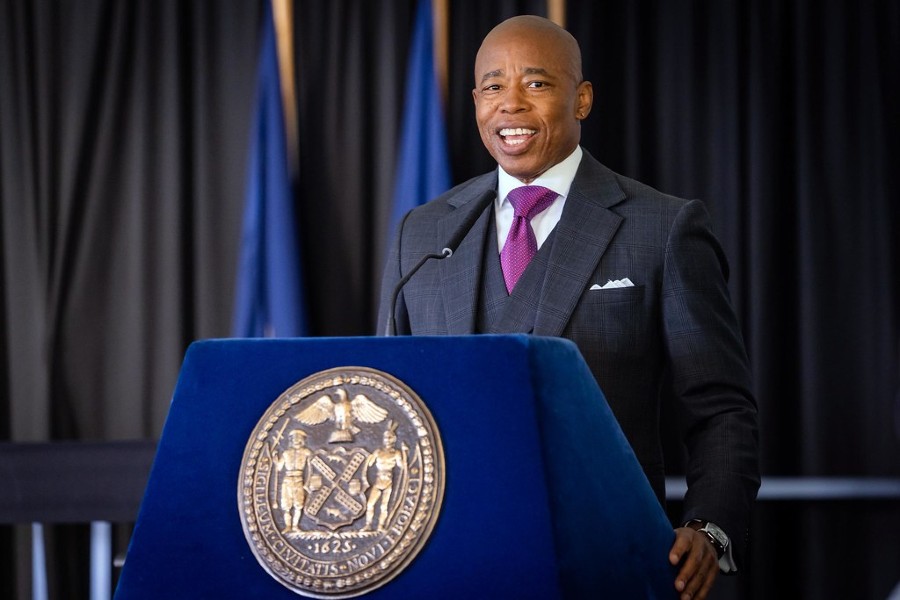
Today, U.S. Senate Majority Leader Charles E. Schumer and U.S. Senator Kirsten Gillibrand announced that the Metropolitan Transportation Authority (MTA).
Would receive $2 million in funding to expand a pilot program that helps blind and low-vision riders as well as commuters with limited English proficiency better navigate the New York City bus and subway system. The funds were awarded through the U.S. Department of Transportation’s Strengthening Mobility and Revolutionizing Transportation (SMART) grant program, which was established by the Bipartisan Infrastructure Law to help public sector agencies implement advanced smart community technologies in order to improve transportation efficiency and safety.
The grant will go toward adding more bus stops and subway stations capable of using the NaviLens and NaviLens Go phone apps. These apps use “NaviLens codes” – colorful, unique QR-style codes that help commuters safely navigate around public transportation systems. When the apps detect a “NaviLens code,” they provide commuters with context-specific information, in text or audio format, on nearby amenities such as station booth location, real-time transit information, elevator outages, and navigation directions to specific points on the platform. So far, the program has been tested at the Jay St-MetroTech Station in Downtown Brooklyn and along the M23 SBS Manhattan bus route.
“Expanding accessibility to our transportation systems, whether it’s to move goods from one end of the city to another or to get commuters to work and school, is vital for New Yorkers,” said U.S. Senator Kirsten Gillibrand. “While the MTA train and bus system is a lifeline for millions throughout the five boroughs, navigating such an expansive public transportation network remains challenging for many New Yorkers. Expanding this project will allow for customers with visual disabilities New Yorkers as well as commuters with limited English proficiency to move around the city more smoothly, efficiently and safely. I am proud to have helped pass the Bipartisan Infrastructure Law, which is providing this critical funding, and I will continue working to make New York’s infrastructure safe and accessible.”
“I’m proud to deliver this critical funding to make our subway and bus systems more accessible for the visually impaired or those who have limited English proficiency,” said U.S. Senator Charles Schumer. “I worked hard to secure funds in the bipartisan infrastructure bill for the SMART grant program so New York’s transit agencies can keep all New Yorkers moving and our economy going strong. These much-needed accessibility upgrades will drive the local economy forward, create opportunities for good paying jobs, and increase access to critical services.”
“Our subway and bus systems are the lifeblood of our city, and it is critical that we put a premium on accessibility for all New Yorkers,” Congressman Dan Goldman said. “Visually impaired New Yorkers and those of us with limited English proficiency often face great difficulties in navigating these systems that are meant to connect us. Expanding accessibility of these systems will allow all New Yorkers to more easily travel throughout the city. I am proud to see the expansion of this program and to continue working for a more inclusive and accessible New York.”
“Our transit system should be accessible to all. Too many New Yorkers are locked out of our world class transportation system due to visual impairments and limited English proficiency. In 2022, I secured $600,000 of state funds to expand NaviLens in my district. Now, I am thankful to our federal partners for committing $2 million to bring this proven accessibility tool to people around the city,” said New York State Senator Brad Hoylman.
“Many thanks to Senators Schumer and Gillibrand for helping the MTA secure this $2 million grant to expand our innovative wayfinding pilot with NaviLens,” said MTA Chief Accessibility Officer Quemuel Arroyo. “NaviLens’ innovative wayfinding and information solution will enhance communications and service delivery for customers with visual disabilities and riders -especially tourists- with limited English-language proficiency. This grant will help us continue delivering on our commitment to a fully accessible transit system which is reflected in this capital plans’ historic investments for accessibility. This mission includes testing innovative technologies like this one which change the game for how we engage with our riders. We thank both Senators for their continued vote of confidence in the MTA and their support delivering a more inclusive and welcoming transit system for all.”
“I wish to convey, on behalf of my team at NaviLens and myself, how delighted and motivated we are to be part of such a life changing project for so many people. New York is putting accessibility at the forefront of its agenda, giving hope to many millions of people living with sight loss around the world as well as ALL residents and visitors to New York,” said NaviLens CEO Javier Pita. “Again, thank you and U.S. Senate Majority Leader Charles E. Schumer and U.S. Senator Kirsten Gillibrand so much for achieving this important project for the community.”
Both the NaviLens and NaviLens Go apps, which can be can be downloaded on Android or iOS devices, use an algorithm to translate QR-style “NaviLens codes” into audio or text and allow customers to determine key information, including real-time arrival data, the accurate location and distance to the nearest stop, crowding levels, and boarding areas.
While NaviLens helps visually impaired commuters reads out signs and provides train arrivals in audio to help blind or low-vision users navigate the station, the NaviLens Go app provides sighted users visual in-station navigation, trip planning information, train arrivals and service status information in up to 34 different languages.
In her efforts to continue improving New York’s infrastructure, Senator Gillibrand announced last month that she secured $5 million in funding for the City College of New York (CCNY) in Harlem and New York University (NYU) to research how to improve the mobility of people and goods. Senator Gillibrand also recently introduced the Resilient Transit Act, which would provide billions in federal funding to help public transit agencies take proactive steps to protect subways and other transit systems from flooding, storm surges, extreme heat, and other climate impacts.
For a video demonstration of how NaviLens works, click here.
Photo credit: Tech.
Become a Harlem Insider!
By submitting this form, you are consenting to receive marketing emails from: Harlem World Magazine, 2521 1/2 west 42nd street, Los Angeles, CA, 90008, https://www.harlemworldmagazine.com. You can revoke your consent to receive emails at any time by using the SafeUnsubscribe® link, found at the bottom of every email. Emails are serviced by Constant Contact








